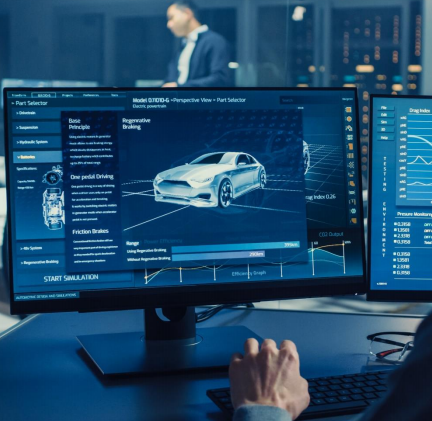
New Delhi: The automotive industry, which has been under severe pressure in 2019, and battered by the deadly impact of the COVID-19 pandemic in 2020, is slowly getting back to the pre-COVID life, though at varying speeds. The industry watchers are observing the sustainability of this revival and identifying growth drivers that can impart momentum to a steady recovery in 2021.
According to a report released by Frost & Sullivan, sales in China and India have been driven by compact small cars bought by the first-timers most of whom were apprehensive about public transportation and ridesharing services.
Online transactions (part/full payment) related to used cars are expected to grow robustly at a CAGR of 9% between 2019 and 2025.~
Meanwhile, in Europe, the success of the incentive programmes in major markets such as Germany contributed to positive numbers. The US automotive market also revived in the third quarter supported by demand for SUVs and pickup trucks.The report underlines 10 growth opportunities that will drive the mobility sector in 2021.
Rebirth of the used car market
The used car business has emerged as a key growth catalyst for the automotive industry. The global used car market is poised to boom driven by COVID-19 and the subsequent market realignment in 2021.
The current ramp-up phase is indicating a V-shaped recovery for the used car market in 2021. The demand for used battery electric vehicles (BEVs) and plug-in hybrid electric vehicles (PHEVs) is set to grow six times over the next six years, according to Frost & Sullivan.
Online transactions (part/full payment) related to used cars are also expected to grow robustly at a CAGR of 9% between 2019 and 2025.
According to the report, a full-stack/integrated approach is a crucial ingredient of online used car platforms. Transparency, reliability and trust will be essential to succeed in online used car sales.
Two-speed world economy
Frost & Sullivan believes that consumer demand will recover faster in China and the US, closely followed by Europe and India.
While China took the lead in the global automotive recovery, the US market gathered momentum in the third quarter. As the COVID-19 situation across Europe remains fluid with the second wave coming in, many of the countries in the region are expected to have a U-shaped recovery.
People’s preference for personal vehicles over public transport and shared mobility over safety concerns is driving growth in the short-term. Many countries are also taking the opportunity to encourage the purchase of hybrid and electric vehicles by offering monetary benefits as part of the COVID-19 recovery packages.
Online to boom
Digitisation has underpinned the emergence of digital retail as a major revenue stream opportunity for the automotive industry. Digital retail has witnessed steady growth over the past decade, capturing a significant share in the more organised automotive markets of Western Europe and North America.
Digital retail sales support better inventory and supply chain management. The lack of physical stores allows it to be more cost-competitive than traditional bricks-and-mortar sales channels.
The consulting firm advised stakeholders to look beyond sales via the website only and expand to multiple e-Commerce channels that will open more revenue-generating opportunities. Gaps in the customer journey through the lifetime of the product also need to be identified and effectively addressed.
Connected car IoT platform
Software-defined vehicles are evolving to provide software-over-the-air (SOTA) and firmware-over-the-air (FOTA) enhancements that allow dramatic transitions within the vehicle, therefore enhance the user experience (UX) as well.
This includes the new-age connected car Internet of Things (IoT) platforms such as the in-car marketplace and Feature-On-Demand (FoD), which allow customers to make use of both mobility and personal retail services inside the car.
Vehicle-centric use cases such as parking, fuelling and charging are of higher priority to customers. According to the US-based market research agency, at least 65% of drivers prefer using these services via in-car marketplace or FoD.
For automakers, the in-car marketplace is a source of recurring revenue as the integration of third-party applications can make several business models possible. Control options via head unit and voice assistants are highly preferred, highlighting that OEMs need to integrate both touch and voice as input modes.
At least 65% of drivers prefer using these services via in-car marketplace or FoD.~
Growth in subscription service
Vehicle subscription represents a key trend for 2021. On the demand side, its popularity is spurred by duration flexibility, short-term commitment and vehicle swapping at no additional cost. On the supply side, it is driven by the large stock of used cars, especially the off-lease cars, which can be monetised by lease providers.
This business model is popular in North America and Europe. It is expected to grow into a global trend by 2025.
Frost & Sullivan said the growing off-lease or zero km dealer stock and postponement of high-value purchases like cars by corporates due to liquidity challenges will be driving this trend.
Solutions need to be made more affordable to appeal to a wider customer base. Particularly over the short term, solutions need to be more personal with adequate health, safety and sanitary features.
Car as a point of health
Automakers are shifting their focus to advanced connectivity technologies that accelerate health, wellness and well-being (HWW) agenda.
The number of connected vehicles with HWW features is projected to expand from 11 million units to more than 40 million units between 2019 and 2025, growing at a CAGR of 25%. The emphasis on combating air pollution and in-vehicle allergens, together with health and safety concerns related to the recent pandemic, will result in HWW manifesting initially as ‘Purify’ in-car features.
According to WHO estimates, approximately 1.35 million people die each year from road traffic crashes. As the next layer of functionality, HWW features are expected to manifest as ‘Measure and Monitor’ features.
Circular economy as auto industry innovates to zero
Automotive companies have been striving to develop zero-emission cars. Currently, the focus is on adopting use and reuse practices, which incorporate ‘Design and Dismantle’ principles at the design stage itself.
It will reduce the waste generated during the production of a vehicle, thereby facilitating ‘Innovation to zero’ in the manufacturing process.
In the past decade, Europe has passed laws to reduce waste from end-of-life vehicles. Incorporating reusable components during manufacturing will make it easier to recycle and reuse.
Increasing consumer awareness about the environment has encouraged companies to develop sustainable vehicles, which have reduced the overall impact on the environment.
Rise of dedicated EV platform architecture strategies
Building a dedicated platform is seen as beneficial to achieving economies of scale and ensuring cost/resource efficiencies for EV makers. Scalable and modular components will allow OEMs to build EVs of different types and sizes using the same set of components, thereby promoting economies of scale.
OEMs lacking the required investment capital to build a dedicated platform need to collaborate with other industry players on co-creation development models.
Automakers should strategise best-in-class flexible and variable EV/AD (autonomous driving) platforms that can seamlessly transition into mobility intelligence platforms, said the report.
Shift from ‘horsepower’ to ‘computing power’
Data-led transformations are inevitable for OEMs, considering the increasing number of digital touchpoints and evolving use cases. Future automotive revenue growth will arise from downstream services driven by a platform approach that leverages data.
Data monetisation is already gaining momentum in the automotive industry and is expected to witness further growth in 2021 post-COVID-19.
Apart from sales revenue, the advent of large volumes of data provides opportunities to OEMs to monetise the data through business models such as brokering, bartering and business intelligence.
Technology platform companies such as Otonomo and Octo Telematics that assist in aggregating, analysing and interpreting the data into actionable insights are on the rise.
Rise of fuel cell electric vehicles (FCEVs)
Fuel cell mobility has been in the spotlight over the last couple of years. FCEVs have 3-5 times the range and faster refuelling, five minutes for hydrogen dispensing and 45 minutes to one hour for a 50-100kW DC fast charger, compared to battery electric vehicles (BEVs).
China, Japan, South Korea, the US and Germany are pushing for the development, manufacture, and sale of FCEVs via various programmes. OEMs like Hyundai, Audi and Toyota have invested heavily in setting up dedicated divisions and programmes for FCEV research and development (R&D).
An increase in FCEVs will be accompanied by a higher requirement for hydrogen refuelling stations. Frost & Sullivan said that the onsite hydrogen production via electrolysis is a viable option that could cut down transportation costs and significantly reduce the retail cost of hydrogen.

















